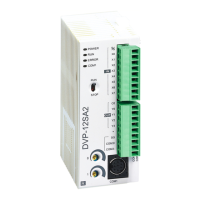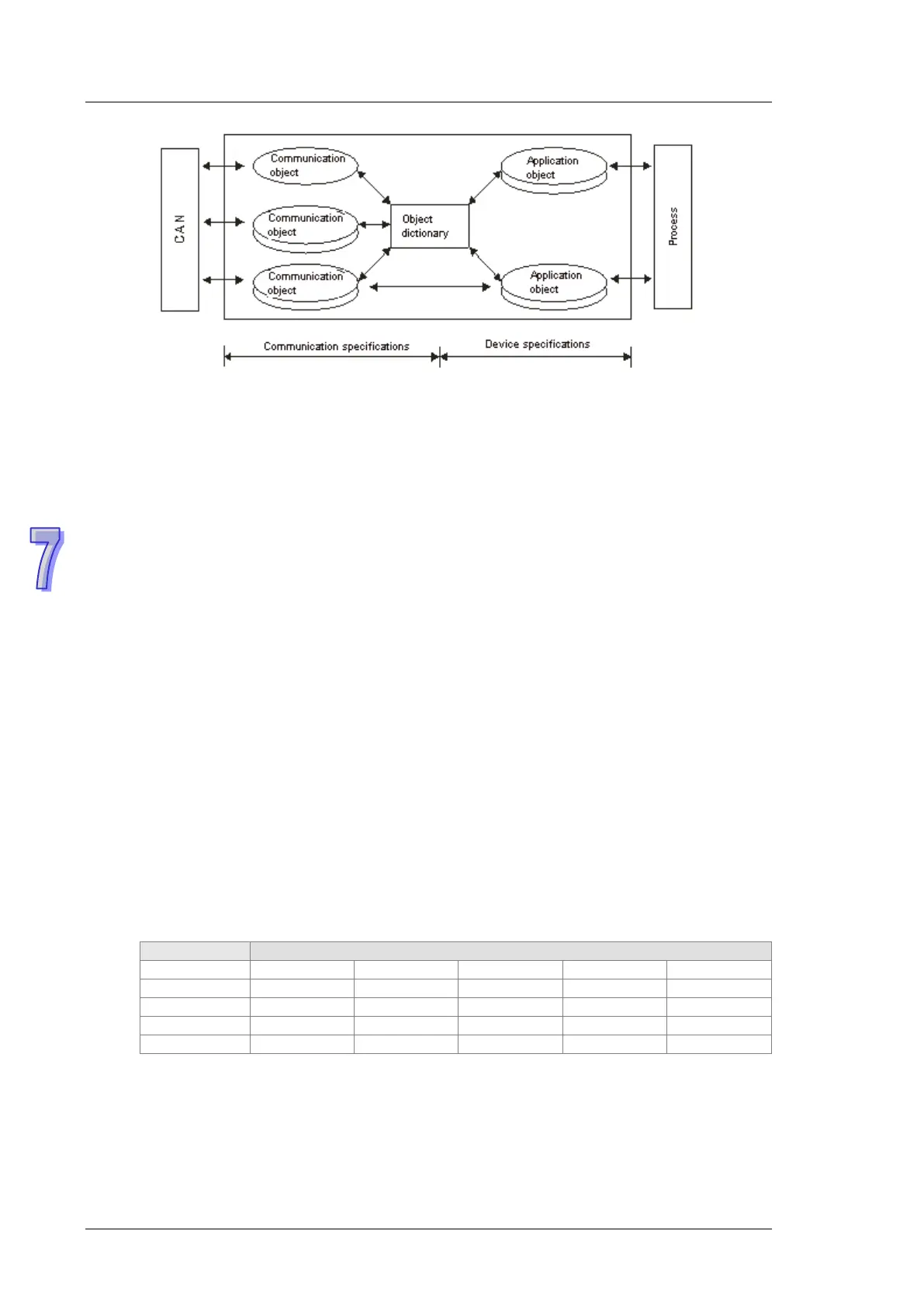DVP-ES2/EX2/EC5/SS2/SA2/SX2/SE&TP Operation Manual - Programming
7.3.2 The CANopen Communication Object
The CANopen communication protocol contains the following communication objects.
PDO (process data object)
The PDO provides the direct visit channel for the device application object, is used to
transmit the real-time data, and has high priority. Every byte in the PDO CAN message
data list is used to transmit the data. The rate of making use of the message is high.
There are two kinds of uses for PDOs. The first is data transmission and the second data
reception. They are distinguished by Transmit-PDOs (TxPDOs) and Receive-PDOs
(RxPDOs). Devices supporting TxPDOs are PDO producers, and devices which are able to
receive PDOs are called PDO consumers.
The PDO is described by means of the “producer/consumer mode”. The data is transmitted
from one producer to one or many consumers. The data which can be transmitted are
limited to 1-byte data to 8-byte data. After the data is transmitted by the producer, the
consumer does not need to reply to the data. Every node in the network will detect the data
information transmitted by the transmission node, and decides whether to process the data
which is received.
Every PDO is described by two objects in the object dictionary: The PDO communication
parameters and the PDO mapping parameters
The PDO communication parameters: The COB-ID which will be used by PDO, the
transmission type, the prohibition time, and the cycle
of the counter
The PDO mapping parameters: They include the object list in an object dictionary. These
objects are mapped into the PDO, including the data length
(in bits). To explain the contents of the PDO, the producer
and the consumer have to understand the mapping.
The PDO transmission mode: synchronous and asynchronous
Synchronous: Synchronous periodic and synchronous non-periodic
Asynchronous: The PDO is transmitted when the data changes, or it is transmitted after a
trigger.
The transmission modes supported by are as follows.
Mode 0: The PDO information is transmitted only when the PDO data changes and the
synchronous signal comes.
Modes 1~240: One piece of PDO information is transmitted every 1~240 synchronous
signals.
Mode 254: The trigger is defined the manufacturer. The definition of the PLC is the same as
mode 255.
Mode 255: PDO is transmitted when the data changes, or it is transmitted after a trigger.

